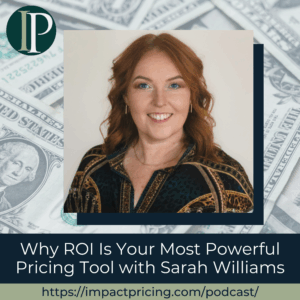
On April 20, 2021, the Wall Street Journal published an article titled Procter & Gamble Will Raise Prices in September.
Here are the first three sentences:
Procter & Gamble Co. this fall will start charging more for household staples from diapers to tampons, the latest and biggest consumer-products company to announce price hikes. The maker of Gillette razors and Tide detergent cited rising costs for raw materials, such as resin and pulp, and higher expenses to transport goods. The announcement, which came as P&G disclosed its quarterly financial results, follows a similar move last month by rival Kimberly-Clark Corp.
Podcast: Play in new window | Download
“Blame costs. Announce your price increases. And watch your competitors.”
– Mark Stiving
In these three sentences are three incredible lessons on raising prices.
Lesson 1: Blame costs
Costs probably did go up, but I would bet the costs went up much less than the price. Costs are pretty much the only reason customers accept for price increases. The truth is probably closer to this sentence. “P&G will raise prices so they can make more profit because they believe their customers are willing to pay more.” It’s probably true, but they could never say that.
Lesson 2: Announce your price increases
Notice that last month Kimberly-Clark announced a price increase (and they blamed increasing costs). Their price increase isn’t due to take effect until late June. Since I’m writing brutally honest news copy, this is what their news release could have said, “KC is announcing a price increase for late June, but they will only implement it if competitors like P&G also agree to a price increase.” To say this out loud is a violation of the law. It is illegal to collude with competitors. But the implication is there.
Lesson 3: Watch for competitor price increases – Decide carefully
P&G likely saw the KC announcement and thought, “we could raise prices or we could keep prices low and take some additional market share.” But what would happen if they didn’t raise their prices? KC likely would not have gone through with their price increase and market shares don’t change. However, if P&G raises their prices, KC goes through with their price increase, market shares still don’t change, and everyone makes more money. This is called implicit collusion. Nobody talked to anybody, they just made assumptions about how the other company would act.
It is possible that I am completely wrong on this. It is possible that costs really did go up. That both KC and P&G independently and myopically decided to raise their prices for the sole purpose of covering their costs. But that doesn’t negate the lessons. Blame costs, announce your price increases and watch your competitors.
Resource Mentioned:
Read Full Article Here: impactpricing.com/blog/three-lessons-from-a-pg-price-increase/
Connect with Mark Stiving:
- Email: [email protected]
















